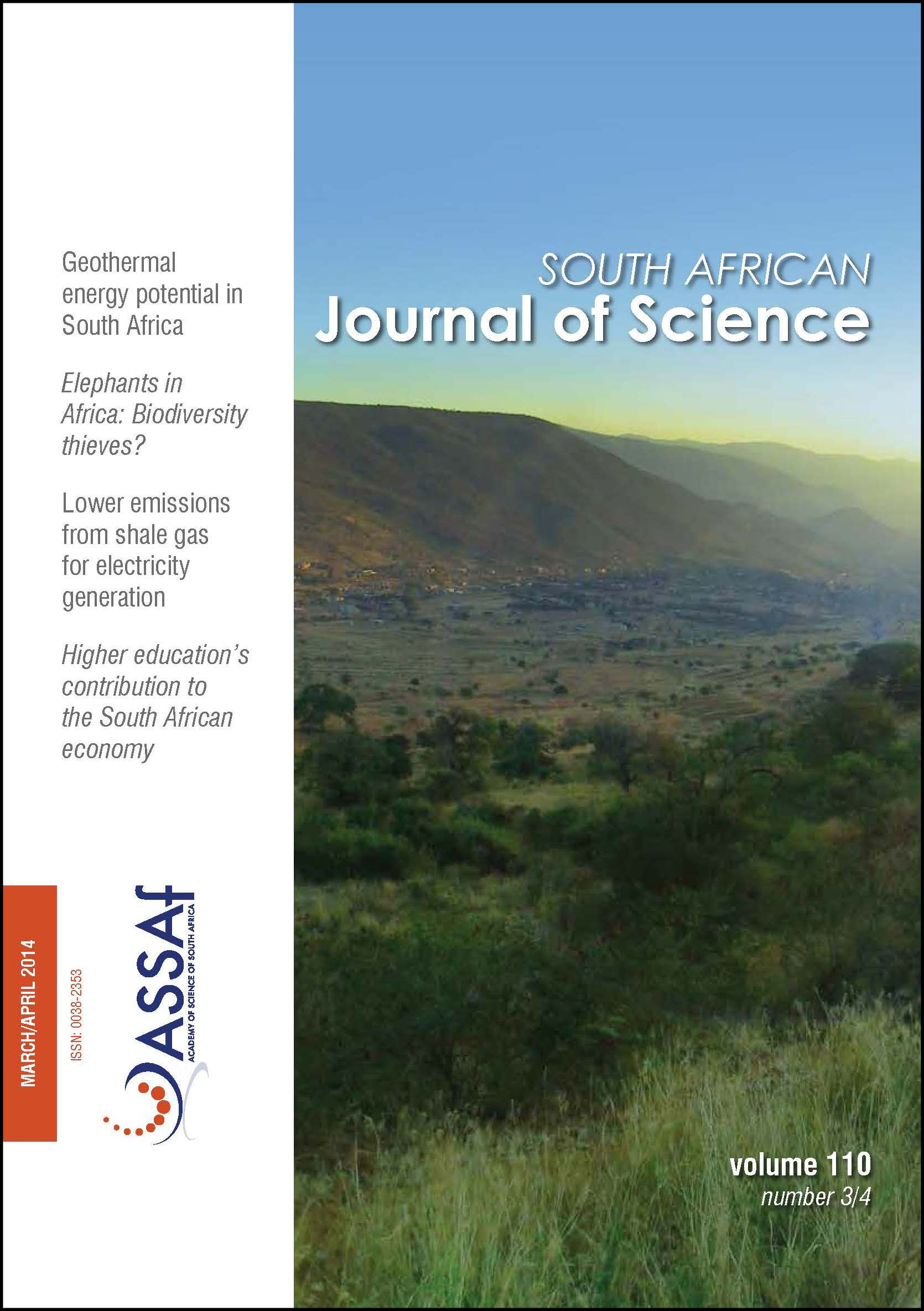Assessment of atmospheric trace metals in the western Bushveld Igneous Complex, South Africa
DOI:
https://doi.org/10.1590/sajs.2014/20130280Keywords:
air quality, temporal assessment, principal component factor analysis, source apportionment, factor analysisAbstract
Trace metal species emitted into the atmosphere from natural and anthropogenic sources can cause various health-related and environmental problems. Limited data exist for atmospheric trace metal concentrations in South Africa, which has the largest industrialised economy in Africa, with significant mining and metallurgical activities. A large fraction of these mineral assets is concentrated in the Bushveld Igneous Complex, with the western limb being the most exploited. To partially address this knowledge gap, atmospheric trace metals were collected in the western Bushveld Igneous Complex at Marikana in the North West Province. Diurnal PM 2.5 and PM 10 samples were collected for 1 year. A total of 27 trace metal species were determined. With the exception of Ni, none of the trace metals measured during the sampling period exceeded local or international air quality standard limit values. Total trace metal concentrations in the PM 10 fraction peaked during the dry months and were regularly washed out during the wet season. A less significant seasonal trend was observed for the trace metal concentrations in the PM 2.5 fraction; a finding attributed to a faster replenishment of smaller particles into the atmosphere after rain events. About 80% of the PM 10 trace metal levels measured occurred in the PM 2.5 fraction, while 40% or more of all metals emanated from the PM 2.5 fraction. This finding indicated a strong influence of anthropogenic sources. Four meaningful emission sources were determined from explorative principal component factor analysis: crustal, vanadium related, base metal related and ferrochromium related, which correlated well with the anticipated atmospheric trace metal sources in the region.Published
2014-03-27
Issue
Section
Research Article
License

All articles are published under a Creative Commons Attribution 4.0 International Licence
Copyright is retained by the authors. Readers are welcome to reproduce, share and adapt the content without permission provided the source is attributed.
Disclaimer: The publisher and editors accept no responsibility for statements made by the authors
How to Cite
van Zyl, P. G., Beukes, J. P., du Toit, G., Mabaso, D., Hendriks, J., Vakkari, V., Tiitta, P., Pienaar, J. J., Kulmala, M., & Laakso, L. (2014). Assessment of atmospheric trace metals in the western Bushveld Igneous Complex, South Africa. South African Journal of Science, 110(3/4), 1-11. https://doi.org/10.1590/sajs.2014/20130280
Views
- Abstract 769
- PDF 432
- EPUB 205
- XML 279












.png)